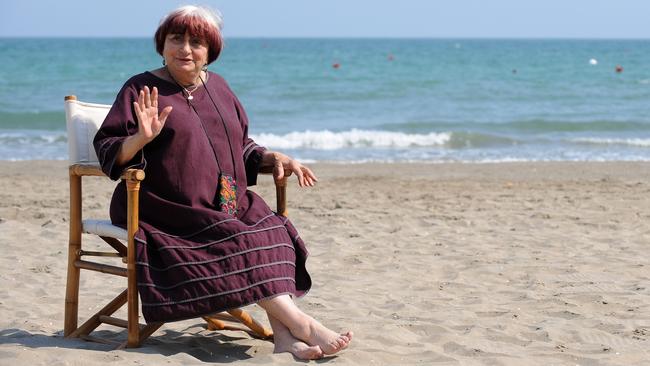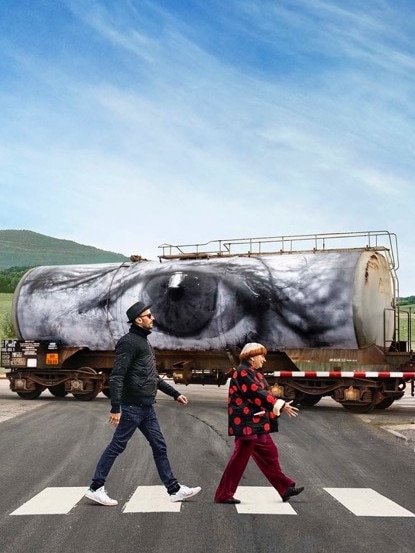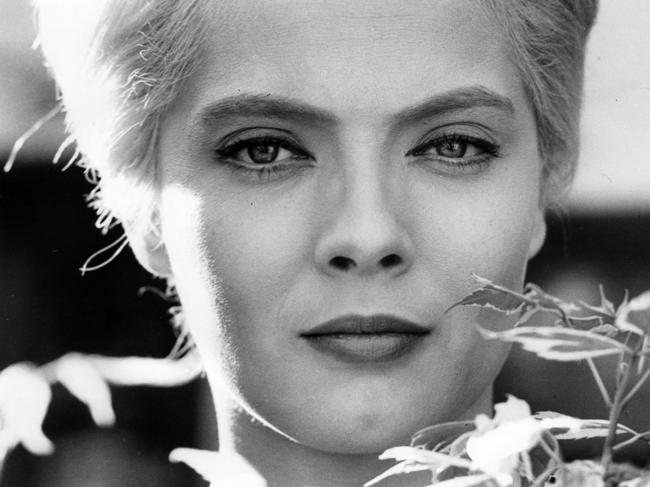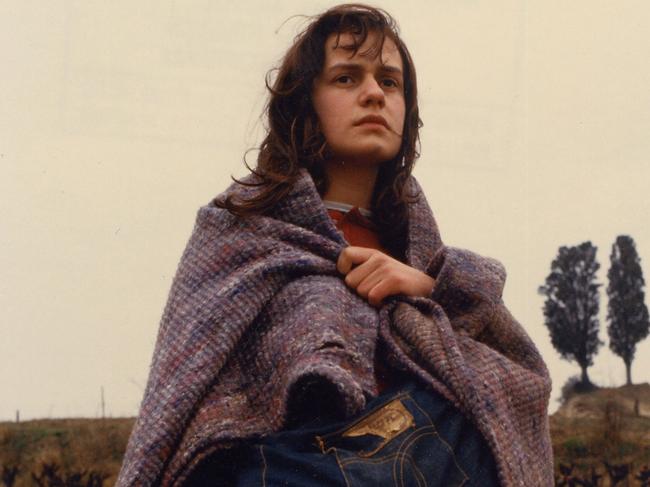Agnes Varda’s legacy of wisdom
Agnes Varda, who died last week at the age of 90, had been a beguiling and inspiring director since the 1950s.

Agnes Varda loved unexpected details and things that others cast aside. On a shelf in her Paris home sits a clear Plexiglas clock with no hands. It’s something she found on a hard rubbish pile, something abandoned and seemingly useless.
I’d seen the scene in her remarkable 2000 documentary The Gleaners and I, in which she reclaims it from the debris. And the final time I interviewed her, last year, she pointed it out to me as an object that sums up her way of thinking about time — not as something that needs to be calculated, but something that is simply there to be experienced.
This notion, and this object, are characteristic of her life and her work. She reflected on things in both concrete and philosophical terms. She looked at things in close-up, but from many angles. She was interested in people: in the marginal, the overlooked, the silenced, those who may not have a voice or representation.
Varda died on Friday at her home in Paris at the age of 90. I feel very lucky to have met her more than once: an encounter with her is something to treasure. Yet this experience is available, in a sense, to anyone who explores her movies. She’s a filmmaker you meet in her work in a very particular way. It’s partly because she has often placed herself within her films, as narrator, subject, observing eye, but it’s also because her sensibility is so clearly expressed. There is a strong sense of self that is expressed as openness, not self-centredness. She pays attention to others. She offers the viewer her own experience to reflect on.
Varda’s cinema is welcoming, intimate, generous, full of tactile and immediate pleasures, yet it would be a mistake to underestimate it for that reason. It runs deep: it can be knotty, challenging, unexpected, contradictory. It rewards revisiting.
She loved images, but also puns and wordplay. She’s an eloquent writer, lucid, expressive and poetic. Her narrative voice is an important part of her filmmaking and the way she engaged with the world.
She was a filmmaker like no other, someone who created her own trajectory, style, rules, a constant, seemingly effortless pioneer. She enjoyed a burst of celebrity in recent years, particularly when her 2017 film Faces Places, which was nominated for an Oscar, brought her into the public eye with a vengeance.

Diminutive, forceful and engaging, she rode the wave with characteristic good humour, grace and sharp wit, making the most of a persona and style she had developed in recent years: an instantly recognisable look encapsulated by her distinctive hairstyle: a two-tone bowl cut, white at the roots, deep red at the ends. She played with that persona in a way that never seemed cynical.
Varda did not have a career, she said, she simply made films. She combined a kind of modesty, grounded in a certainty about what she valued, with a sense of ambition based on the wish to do things on her own terms. She was filmmaker of the city, the country and the beach, a director who dissolved the borders between documentary and fiction.
Born in Belgium, raised in France, she started out studying art and photography, then made her first feature, La Pointe Courte, in 1954, with few resources and no formal training.
She was one of the few female directors in France in the 1950s and 60s, and she has been variously called the grandmother and godmother of the new wave, a title she seemed comfortable enough with. “Now I’m the dinosaur of the new wave,” she said recently.
Yet the godmother-grandmother epithet scarcely does justice to the qualities that made her distinctive.
Many of her features presented searching images of women. Her second feature, Cleo From 5 to 7, unfolds in real time, between the hours of 5pm and 7pm, with a central character who is awaiting the results of a medical diagnosis. One Sings, the Other Doesn’t explores a complex female friendship.

Vagabond, her biggest success, was a drama about a young homeless woman, a seemingly episodic movie made with strict cinematic rigour, based around 13 travelling shots. Le Bonheur, a film with brilliant colours and bleak subject matter, explores a marriage that disintegrates in the saddest of ways.

In the 60s, Varda went to the US with her husband, the director Jacques Demy, who had enjoyed great success with his exquisite musical The Umbrellas of Cherbourg. Hollywood therefore beckoned, and Varda went along, too, curious to see what she would find.
She loved Los Angeles, and found films to make there, documentary shorts about the Black Panthers, Los Angeles mural culture, an artist relative. She shot a film called Lions Love ( … and Lies) whose cast included Warhol superstar Viva, the creators of the musical Hair and filmmaker Shirley Clarke.
She appeared on the cover of the very first Interview magazine in a group shot; 48 years later, she was the cover star in her own right.
After Demy’s death in 1990, there were no more features, but a new, potent phase of filmmaking. The Gleaners and I, in which she was a distinct, inquiring presence, is about the act of gleaning, or scavenging, and the people who practise it. It’s also a meditation on art, on cinema history and innovation, on ageing, on the human body, on her own body, on political and philosophical questions that arise from the act of gleaning.
Varda is there in the film, enjoying her new digital camera and its capacities, observing and asking questions, finding her own treasures, some perishable, some lasting: they include a heart-shaped potato and that clock with no hands.
She went on to make more searching documentaries and essay films including The Beaches of Agnes and a fascinating series, From Here to There. She also began to create art installations, generally cinema-based.
Faces Places, the Oscar-nominated documentary, was co-directed with the artist known as JR, who makes large-scale photographic images that he pastes on to the sides of buildings and natural structures. Together they went on a road trip across France, creating large-scale portraits of the people they met, in collaboration with their subjects.
Varda was an adventurer with a home base. Since the 50s, she lived in the same place in rue Daguerre in the 14th arrondissement, a place whose inhabitants and shopkeepers she immortalised in a 1976 documentary short Daguerreotypes. That was where I interviewed her the first time, and the last. At one stage there was an editing suite and an office across the road, and the films of her company, Cine-Tamaris, the works of Varda and Demy on DVD, were available to buy. She kept Demy’s films as well as her own in the public eye, producing handsomely presented DVDs with witty and illuminating extras.
To the end of her life, she was working, planning, creating. A new documentary, Varda by Agnes, premiered last month at Berlin film festival, and will no doubt come to Australia later this year. It’s a work based on talks that she gave on filmmaking, punctuated by examples from her own films — another instance of that generous spirit, and another way to meet the artist and her work, to discover or rediscover one of cinema’s wisest, most beguiling and most inspiring figures.



To join the conversation, please log in. Don't have an account? Register
Join the conversation, you are commenting as Logout